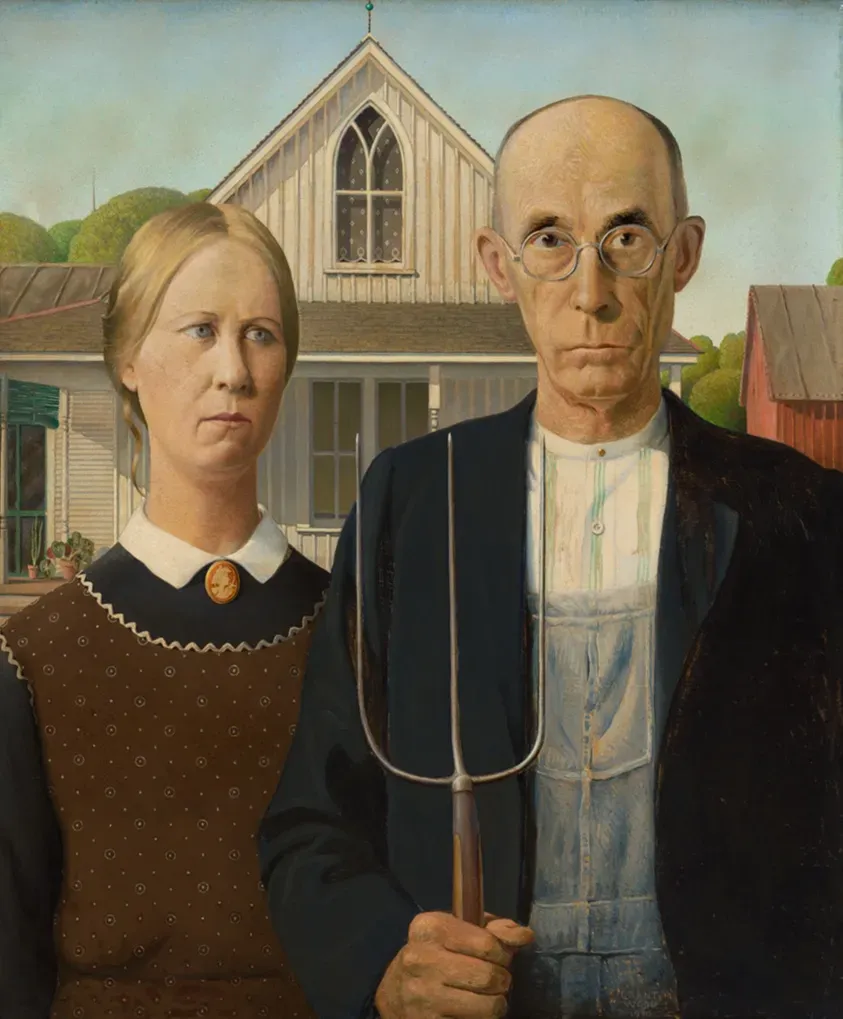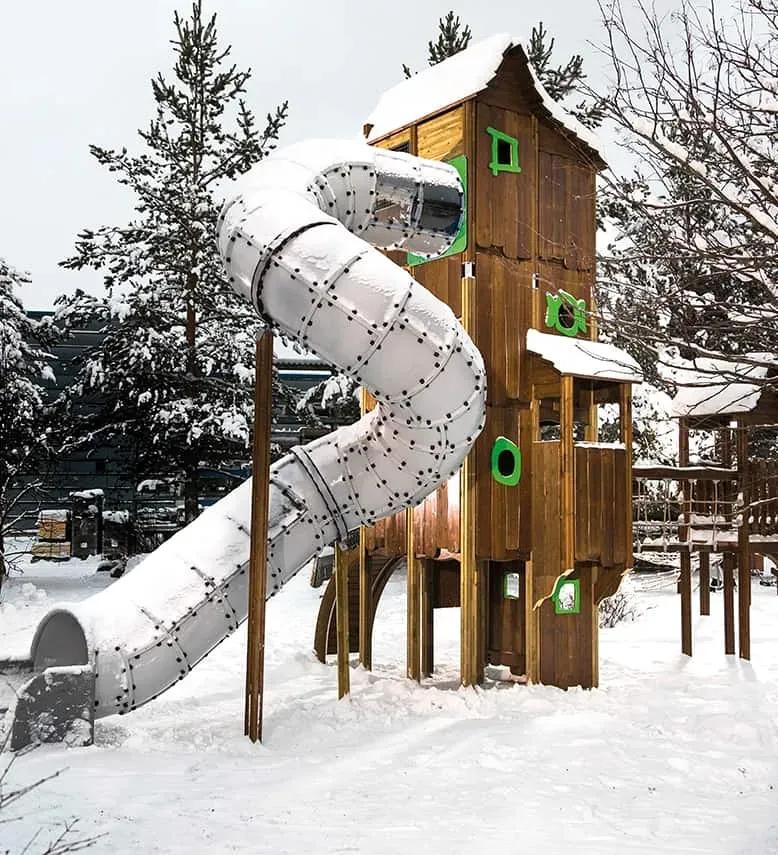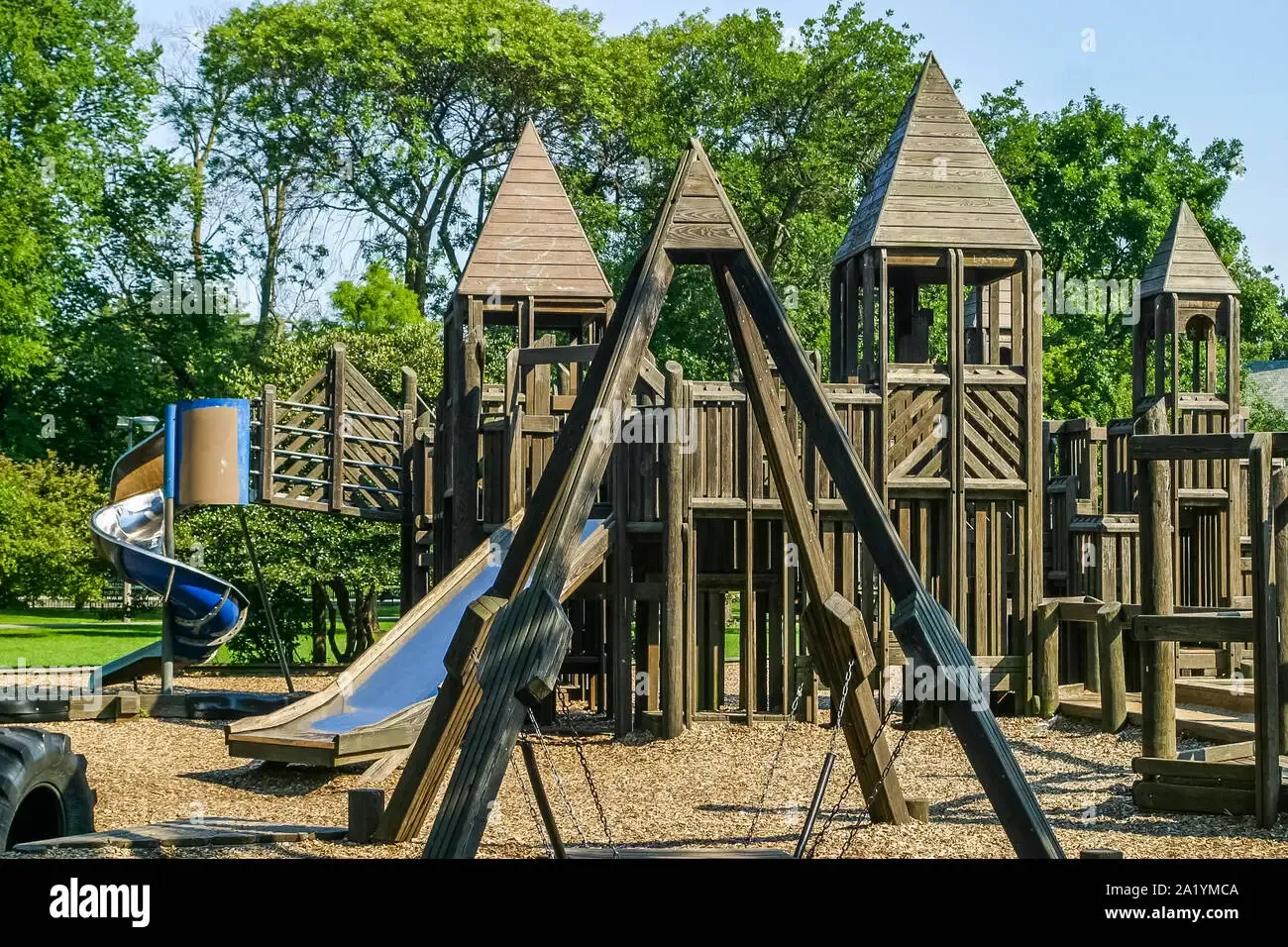Table of Contents
So, you're eyeing commercial wood playground equipment, huh? Maybe you've seen those sprawling structures at a park or school and thought, "Could that work for my space?" It's a fair question. Wood playgrounds offer a classic look, a certain undeniable charm that metal or plastic just can't quite replicate. But let's be honest, the romance fades fast if the equipment splinters, rots, or becomes a safety hazard faster than a toddler can say "slide." Choosing the right commercial wood playground equipment isn't just about aesthetics; it’s about making a long-term investment in safety, durability, and years of actual play, not just maintenance headaches.
Why Wood for Commercial Playgrounds? Looking at Longevity and Materials

Why Wood for Commercial Playgrounds? Looking at Longevity and Materials
Beyond the Look: The Appeal of Wood in Play Spaces
So, you're thinking about putting in commercial wood playground equipment? Good on you. There's something about wood that just feels right in a natural setting, isn't there? It blends into parks, schoolyards, and community spaces in a way that bright plastic or cold metal often struggles to do. It has a timeless quality, evoking memories of simpler times and connecting kids to nature, even in a structured play environment. People seem to gravitate towards it; maybe it's the texture, the smell, or just the visual warmth. But let's be real, nobody's investing serious cash based purely on nostalgia. The real question is whether that aesthetic appeal translates into practical benefits and long-term value for commercial use. It needs to withstand not just the elements, but the constant, often rough, use of dozens of kids day in and day out.
The Hard Truth About Softwood vs. Hardwood Longevity
Now, about that longevity. Not all wood is created equal when it comes to commercial wood playground equipment. You've got your softwoods, like pine or cedar, and your hardwoods, like oak or maple. Cedar gets a lot of love for its natural resistance to rot and insects, which is a big plus, but it can be softer and prone to denting or splintering under heavy use. Pine is often used because it's cheaper, but it absolutely requires pressure treatment to stand a chance against decay, and even then, you're monitoring it closely. Hardwoods are tougher, more durable, and less likely to splinter, but they can be heavier, more expensive, and some aren't naturally resistant to decay, requiring similar treatment. The lifespan really comes down to the specific wood type, how it's treated, and how well it's maintained. You wouldn't build a bridge out of balsa wood, and you shouldn't expect untreated pine to last decades in a playground.
Common Wood Types Used in Commercial Playgrounds
- Cedar: Naturally resistant to rot and insects; lighter weight; can be softer and prone to dents/splinters.
- Redwood: Similar properties to cedar, excellent decay resistance; often more expensive; sustainably sourced options are key.
- Pine (Pressure-Treated): Economical choice; requires chemical treatment for durability; needs regular inspection for treatment effectiveness and splintering.
- Cypress: Good decay resistance; stable and less likely to warp; availability can vary.
Designing Your Space with Commercial Wood Playground Equipment
Starting with a Blank Slate (or Not): Assessing Your Site
Alright, so you've settled on commercial wood playground equipment. Great choice! Now comes the fun part, or maybe the slightly daunting part, depending on how you look at it: figuring out where this magnificent structure is actually going to sit. This isn't just about dropping a pre-fab unit onto a patch of grass. You need to really look at your space. How big is it? What's the shape? Are there any weird slopes, trees you can't touch, or existing features you need to work around? Thinking about the flow is crucial too. Where will kids enter the play area? Where will parents stand? Is there enough room around the equipment for safety zones? Skimping on this initial site assessment means you might end up with a fantastic piece of commercial wood playground equipment that just doesn't fit right or creates awkward dead zones.
More Than Just Pieces: Planning for Play Value and Flow
Designing with commercial wood playground equipment is like building with really big, fun LEGOs, but with physics and safety codes involved. You're not just picking a slide here and a climbing wall there. You're creating an experience. Think about the different age groups who will use it. Toddlers need different challenges than ten-year-olds. How can you create zones that cater to various abilities and interests? Maybe a quiet area for sensory play near the ground, a challenging climbing structure for older kids, and swings that work for everyone. Consider how kids will move through the space. Does one activity naturally lead to another? Can they run loops, or will they get stuck? A well-designed space using commercial wood playground equipment encourages different types of play – social, physical, imaginative – and keeps kids engaged longer. It’s about crafting an environment, not just installing equipment.
- Consider the age range of primary users.
- Map out safety surfacing requirements around each piece.
- Plan clear entry and exit points for the play area.
- Think about visibility for supervision.
- Integrate natural elements if possible (e.g., existing trees for shade).
- Allow space for future expansion or additional features.
Installation and Upkeep for Commercial Wood Playground Equipment

Installation and Upkeep for Commercial Wood Playground Equipment
Getting it Built and Keeping it Standing
Alright, you've picked the perfect spot and designed a killer play area with your commercial wood playground equipment. Now comes the part where the rubber meets the road, or rather, where the wood meets the ground: Installation and Upkeep for Commercial Wood Playground Equipment. This isn't a weekend DIY project, unless you happen to have a crew of experienced builders and heavy machinery lying around. Proper installation is non-negotiable for safety and longevity. Footings need to be deep and stable, hardware needs to be secured correctly, and everything needs to be level and plumb. Cutting corners here invites disaster down the line, from wobbly structures to outright failure. And once it's in? The work isn't over. Wood requires regular attention. Think of it less like a "set it and forget it" scenario and more like owning a classic car – it needs routine maintenance to keep running smoothly and safely.
What exactly does that regular attention involve? It's more than just a quick visual sweep. You're looking for splintering, checking (those cracks that appear in wood), loose bolts, signs of rot or insect infestation, and wear and tear on components like swings or slides attached to the wood structure. Skipping these checks is like ignoring a weird rattling noise in your car – it might be nothing, or it might be a sign of a major problem brewing. A proactive maintenance schedule can catch small issues before they become expensive, dangerous failures. Ignoring upkeep on commercial wood playground equipment isn't just negligent; it's irresponsible when kids' safety is on the line.
- Inspect for loose bolts and hardware weekly.
- Check for splintering and rough surfaces monthly.
- Look for signs of rot or insect damage quarterly.
- Inspect footings for stability twice a year.
- Reapply sealant or stain as recommended by the manufacturer, typically every 1-3 years.
Making the Right Choice: Factors When Buying Wood Play Systems

Making the Right Choice: Factors When Buying Wood Play Systems
Crunching the Numbers: Beyond the Sticker Price
So, you're ready to commit to commercial wood playground equipment. Excellent. But before you sign on the dotted line, let's talk money. It's not just the initial purchase price of the play structure itself. That's often just the entry fee. You need to factor in installation costs, which can vary wildly depending on site complexity and the equipment size. Then there's the safety surfacing – wood chips, rubber mulch, poured-in-place rubber – which is a significant expense and requires its own maintenance. And don't forget the ongoing cost of upkeep we just discussed. Sealing, staining, replacing worn parts, inspecting for rot and pests – this all adds up over the years. A cheaper initial investment in commercial wood playground equipment might end up costing you far more in the long run if it requires constant repairs or early replacement. Think total cost of ownership, not just the price tag.
Safety First: Standards, Certifications, and Peace of Mind
Nobody wants a call about a playground accident. This is where safety standards come into sharp focus when selecting commercial wood playground equipment. In the US, the primary guidelines come from the ASTM (American Society for Testing and Materials) and the CPSC (Consumer Product Safety Commission). Any reputable manufacturer of commercial wood playground equipment will design and build their structures to meet or exceed these standards. Ask for documentation. Look for certifications. This isn't optional; it's foundational. Beyond the structure itself, consider pinch points, fall heights, head entrapment possibilities, and the type and depth of safety surfacing needed for the specific equipment you're installing. A flashy design is worthless if it's a liability waiting to happen.
Safety Standard Body | Key Focus | Relevance to Wood Playgrounds |
|---|---|---|
ASTM (F1487) | Standard Consumer Safety Performance Specification for Playground Equipment for Public Use | Covers design, manufacturing, performance, and labeling of commercial equipment. |
CPSC | Public Playground Safety Handbook | Provides guidelines and recommendations for playground design, installation, and maintenance. |
Who Made This Thing? Manufacturer Reputation and Warranty
Finally, consider the source. Who is selling you this commercial wood playground equipment? Are they established? Do they have a track record? Talk to other organizations or municipalities that have purchased from them. Ask about their experience with the equipment's durability and the manufacturer's responsiveness to issues. A solid warranty isn't just a piece of paper; it's a company standing behind their product. Understand what the warranty covers (wood rot? structural integrity? hardware?) and for how long. A manufacturer who offers a decent warranty and has a good reputation for customer service is a far safer bet than a fly-by-night operation offering rock-bottom prices. Your future self, knee-deep in maintenance requests, will thank you.
The Final Word on Wood Play Structures
Picking commercial wood playground equipment isn't a decision to take lightly. It requires looking past the initial appeal and digging into the realities of material quality, smart design choices, and the ongoing commitment to maintenance. While wood offers a timeless aesthetic and can provide a fantastic play experience, its longevity and safety hinge entirely on selecting the right system and ensuring it's properly installed and cared for. Don't just fall for the rustic charm; evaluate the practicalities to ensure your investment stands the test of time and traffic, providing years of reliable fun instead of becoming an expensive headache.